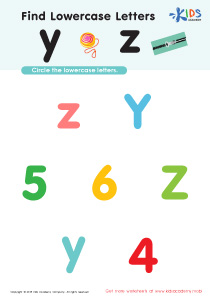Letter recognition Normal Uppercase Letters Worksheets for Ages 4-7
11 filtered results
-
From - To
Enhance your child’s letter recognition skills with our engaging Normal Uppercase Letters Worksheets, designed specifically for ages 4-7. These interactive worksheets make learning fun and effective, enabling young learners to identify and practice uppercase letters through various activities. From tracing and coloring to matching games, each worksheet encourages active participation while reinforcing letter familiarity. Perfect for homeschooling or classroom use, our materials help build a solid foundation in literacy! Start your child’s journey towards reading success with our thoughtfully created resources that cater to diverse learning styles and keep young minds excited about discovering the alphabet. Explore our collection today!
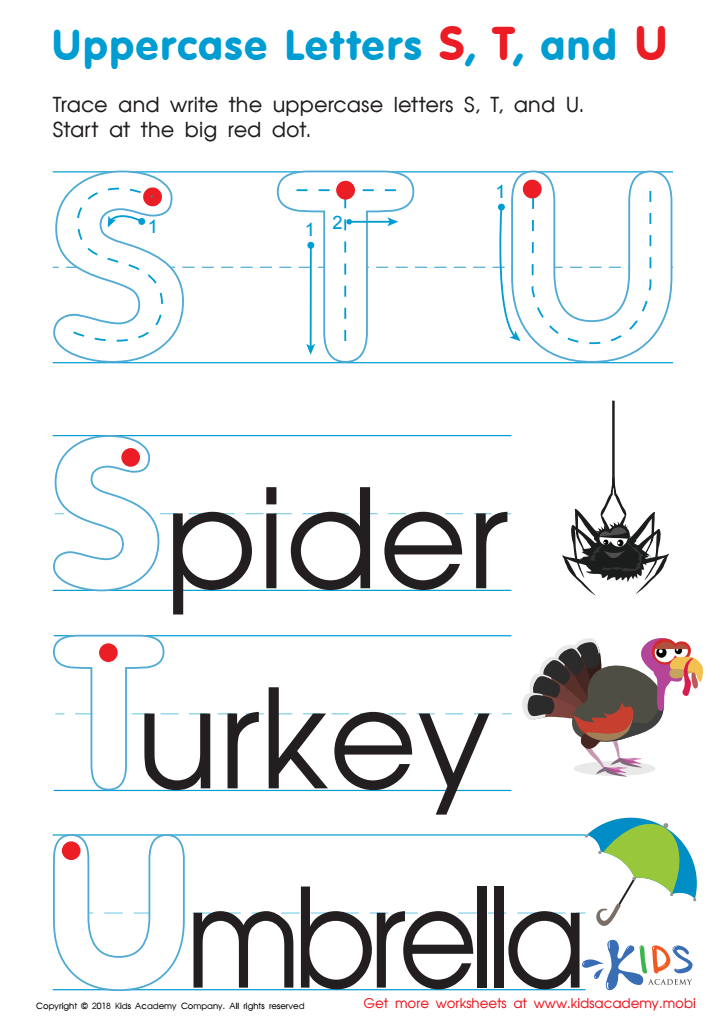

Uppercase Letters S, T, and U Worksheet
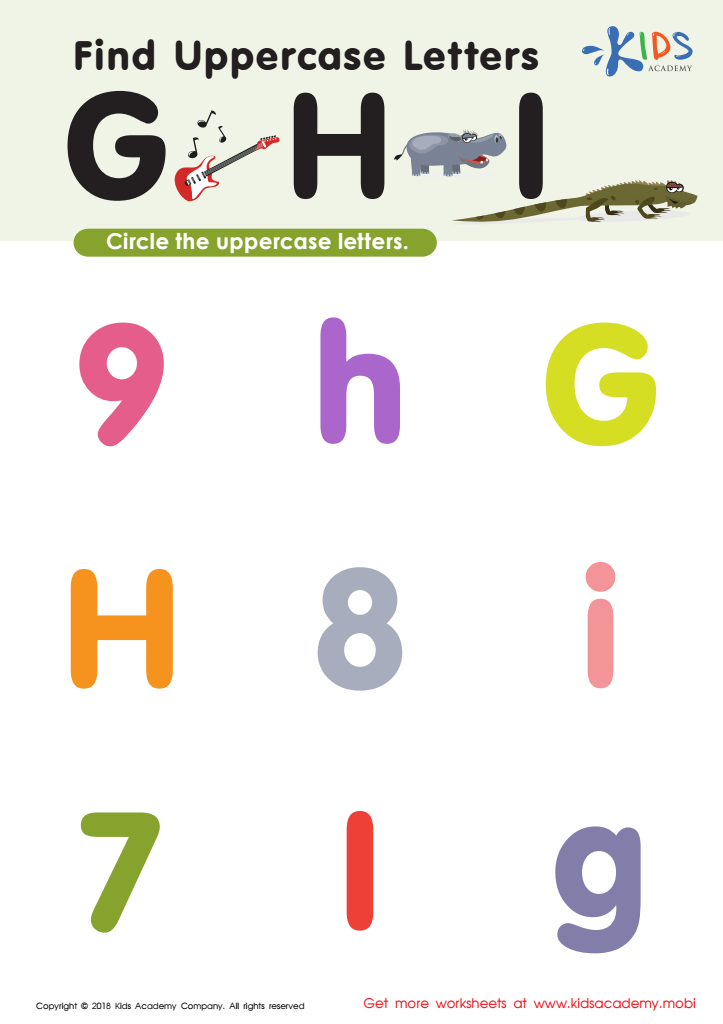

Find Uppercase Letters G, H, and I Worksheet


Uppercase Letters Maze Worksheet


Find Uppercase Letters Worksheet


Find Uppercase Letters J, K, and L Worksheet
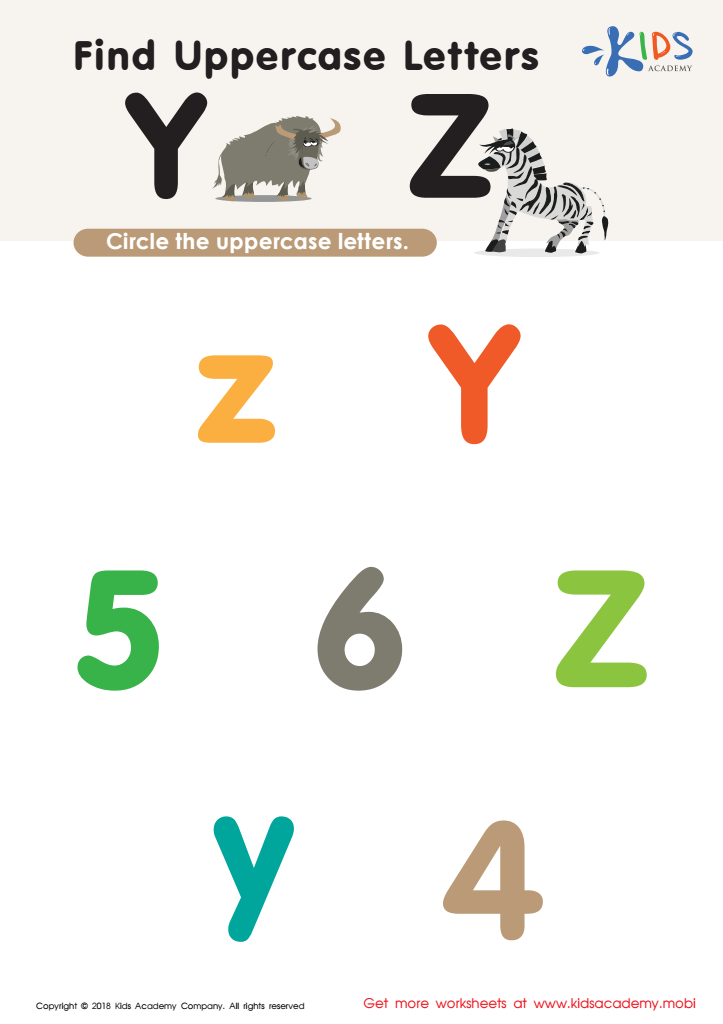

Find Uppercase Letters Y Z Worksheet
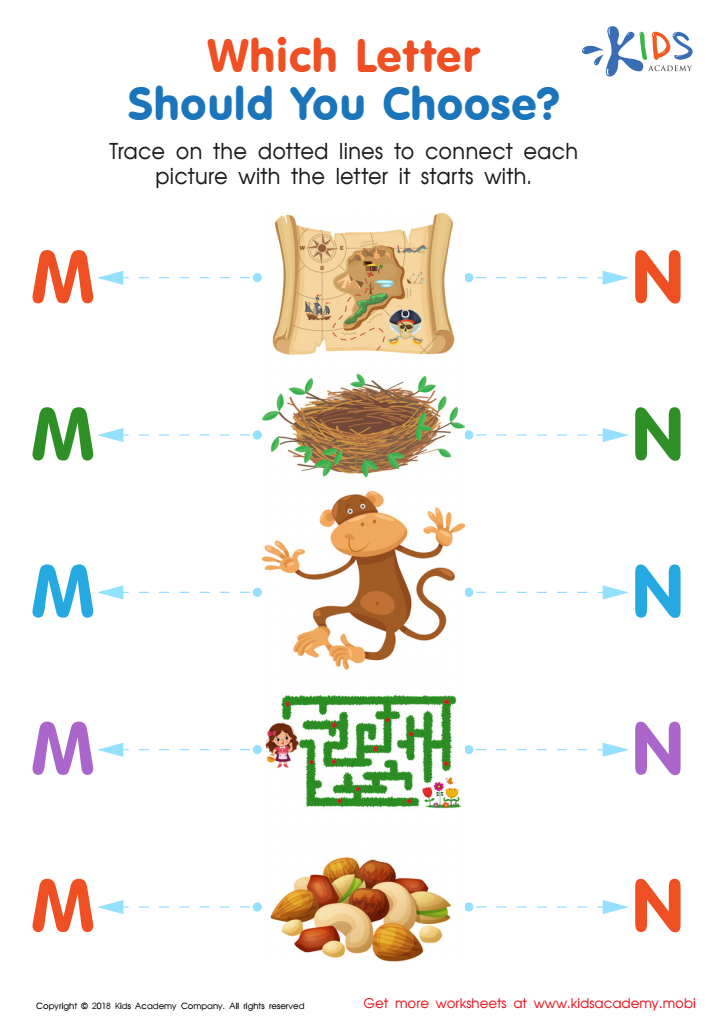

Which Letter Should you Choose? Worksheet


Find Uppercase Letters A, B, and C Worksheet


Find Uppercase Letters V, W, X Worksheet
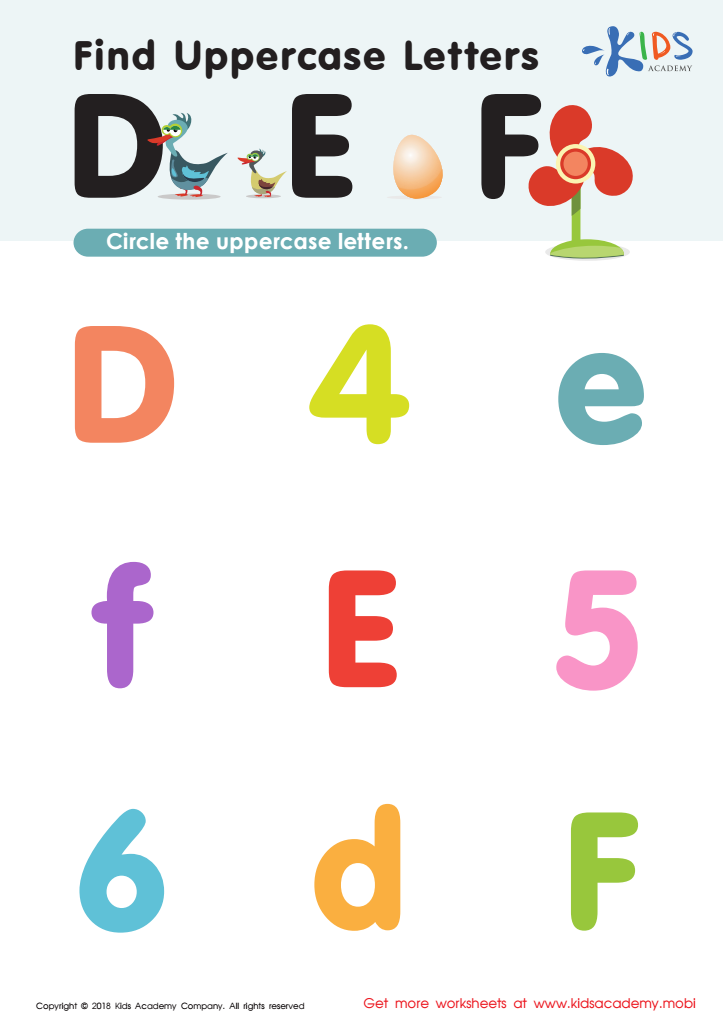

Find Uppercase Letters D, E, and F Worksheet
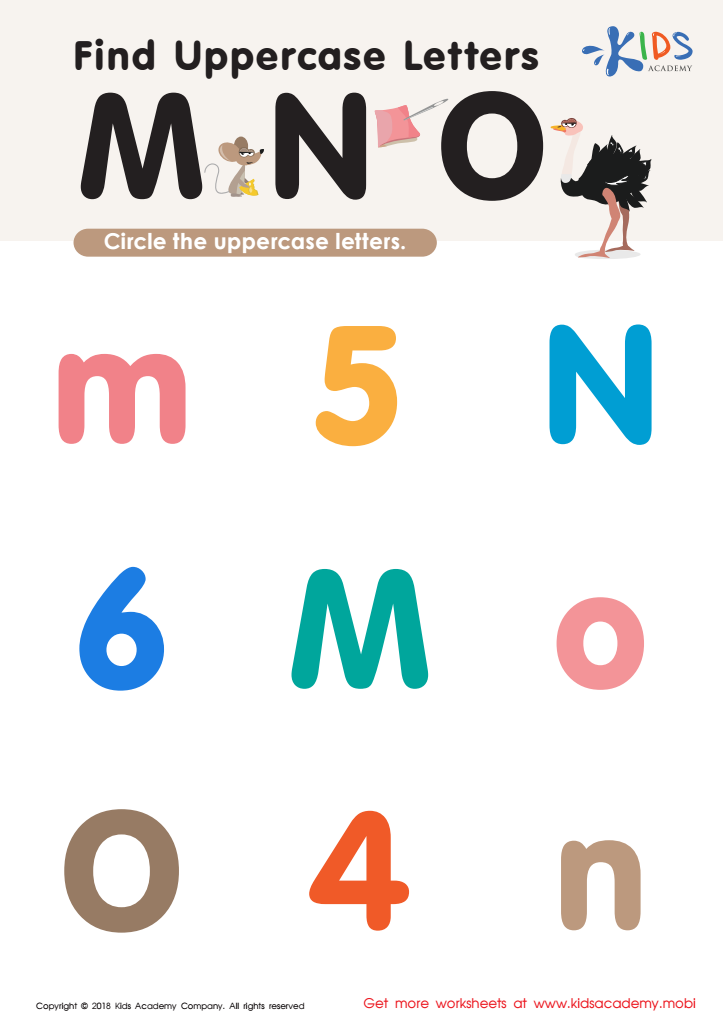

Find Uppercase Letters M, N, and O Worksheet
Letter recognition, particularly of uppercase letters, is a fundamental skill for children aged 4-7 as it lays the groundwork for literacy development. At this critical stage, children begin to understand that letters are the building blocks of words and sentences. Recognizing uppercase letters helps them learn that each letter has a distinct sound and purpose, enabling them to connect spoken language with written language.
For parents and teachers, fostering this skill is vital because it directly impacts children’s reading readiness. Children who can identify letters are more likely to experience confidence and success in early reading activities. They learn to navigate books, recognize their names in print, and relate to environmental print, which increases their engagement with literacy. Furthermore, strong letter recognition skills facilitate better spelling and writing as children master the use of uppercase letters at the beginning of sentences and for proper nouns.
Encouraging letter recognition at home and in the classroom through playful activities such as puzzles, games, and reading together is essential. These strategies not only boost cognitive development but also nurture a lifelong love of reading. Thus, investing time in teaching letter recognition is crucial for developing confident, capable young learners.
 Assign to My Students
Assign to My Students









